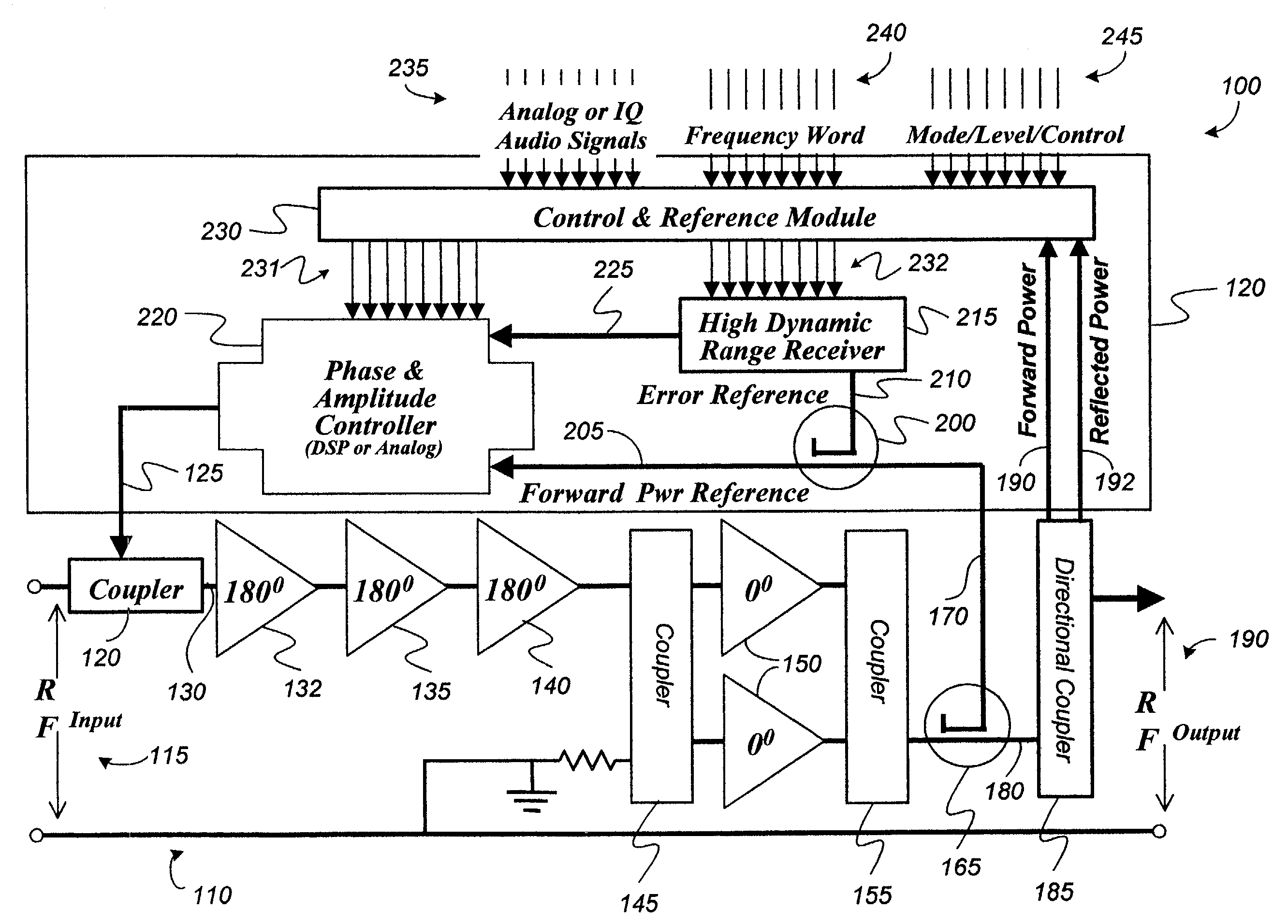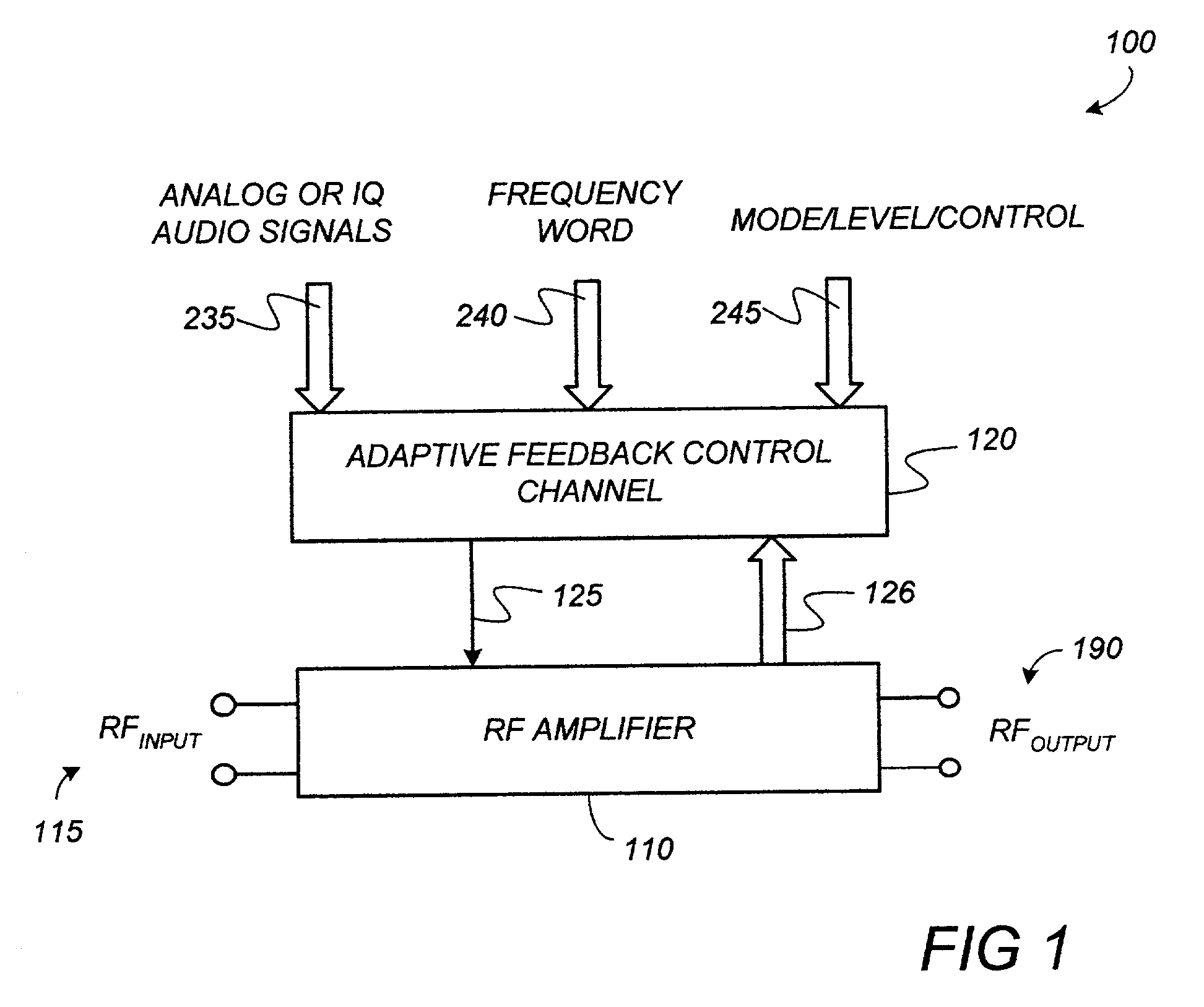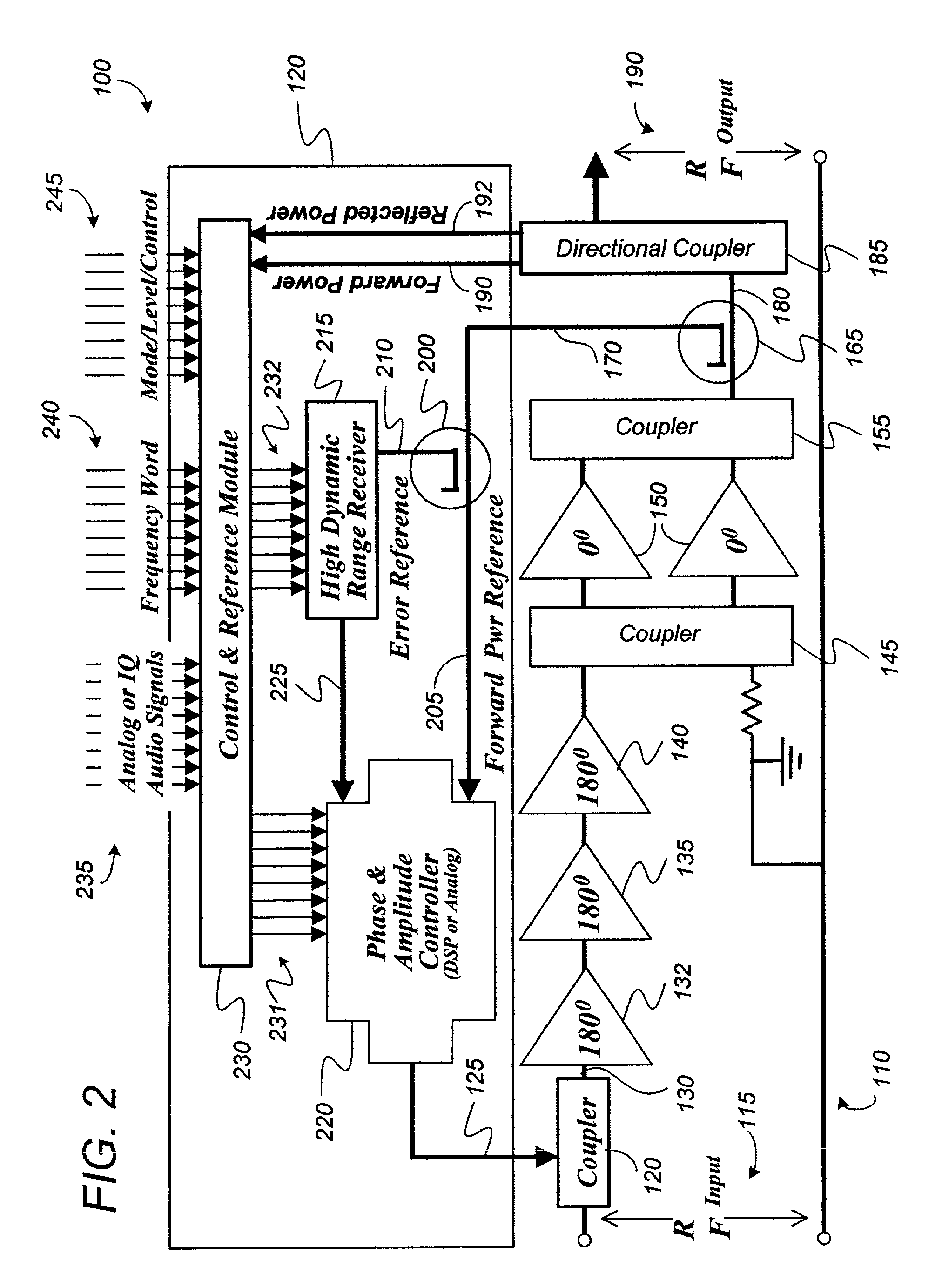Adaptive feedback channel for radio frequency power amplifiers
a radio frequency power amplifier and feedback channel technology, applied in the field of radio frequency power amplifiers, can solve the problems of limited dynamic control range, inability to meet present and future rf system requirements, and lack of dynamic output level control, efficiency and linearity, to achieve the effect of improving amplifier stability and higher system gain
- Summary
- Abstract
- Description
- Claims
- Application Information
AI Technical Summary
Benefits of technology
Problems solved by technology
Method used
Image
Examples
Embodiment Construction
[0008]FIG. 1 is a block diagram which illustrates a feedback controlled RF power amplifier 100 in accordance with the present invention. RF power amplifier 100 includes an amplifier circuit 110 and an adaptive feedback control channel 120. Amplifier circuit 110 is an RF amplifier circuit having high gain, for example having a typical gain of 1,000 or greater, for amplification of an RF input signal RFinput 115. While gains as low as 30 can be used with the adaptive feedback control channel of the invention, higher gains of at least between 100 and 1000 will provide improved stability and performance. Generally, however, the adaptive feedback control channel concepts disclosed herein are gain independent.
[0009]Using adaptive feedback control channel 120, dynamic output level control, efficiency and linearity of amplifier circuit 110 are enhanced. FIG. 2 is a block diagram illustrating a more particular embodiment of RF power amplifier 100. FIGS. 1 and 2 are discussed together to bett...
PUM
 Login to View More
Login to View More Abstract
Description
Claims
Application Information
 Login to View More
Login to View More - R&D
- Intellectual Property
- Life Sciences
- Materials
- Tech Scout
- Unparalleled Data Quality
- Higher Quality Content
- 60% Fewer Hallucinations
Browse by: Latest US Patents, China's latest patents, Technical Efficacy Thesaurus, Application Domain, Technology Topic, Popular Technical Reports.
© 2025 PatSnap. All rights reserved.Legal|Privacy policy|Modern Slavery Act Transparency Statement|Sitemap|About US| Contact US: help@patsnap.com



